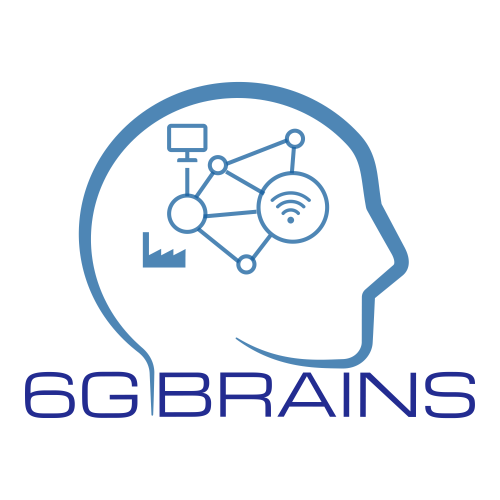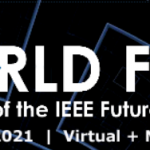Ubiquitous smart wireless connectivity is critical for future large-scale industrial tasks, services, assets and devices. Very significantly improved connectivity needs to be unlocked through novel spectrum combinations and the fully autonomous management of the underlying network resources by applying online Artificial Intelligence (AI) at multiple decision layers.
6G BRAINS aims to bring AI-driven multi-agent deep reinforcement learning (DRL) to perform resource allocation over and beyond massive machine-type communications with new spectrum links including THz and optical wireless communications to enhance the performance with regard to capacity, reliability and latency for future industrial networks.
6G BRAINS will deliver a novel comprehensive cross-layer DRL driven resource allocation solution to support the massive connections over device-to-device (D2D) assisted highly dynamic cell-free network enabled by Sub-6 GHz/mmWave/THz/OWC and high resolution 3D Simultaneous Localization And Mapping (SLAM) of up to 1 mm accuracy. The enabling technologies in 6G BRAINS focus on four major aspects:
- Enhanced new spectrum links: OWC and THz
- AI-driven D2D cell free network architecture for highly dynamic and ultra-dense connectivity
- AI-based end-to-end directional network slicing with guaranteed QoS over highly dynamic networks
- AI-driven data fusion for 3D indoor position mapping through heterogeneous location methods enabling 1 mm location position accuracy and 1° orientation accuracy.
The proposed solution will be validated by proof-of-concept trials. The primary and secondary applications of THz and OWC technologies for a very broad spectrum of scenarios will be evaluated at BOSCH’s self-contained smart factory. The developed technologies will be widely applicable to various vertical sectors such as Industry 4.0, intelligent transportation, eHealth and others. In particular, new business opportunities emerging in 6G BRAINS will be identified for follow-up exploitation activities. The results of 6G BRAINS are expected to create a solid basis for future projects and global standardisation for B5G and 6G technologies in areas relevant to industrial environments.





